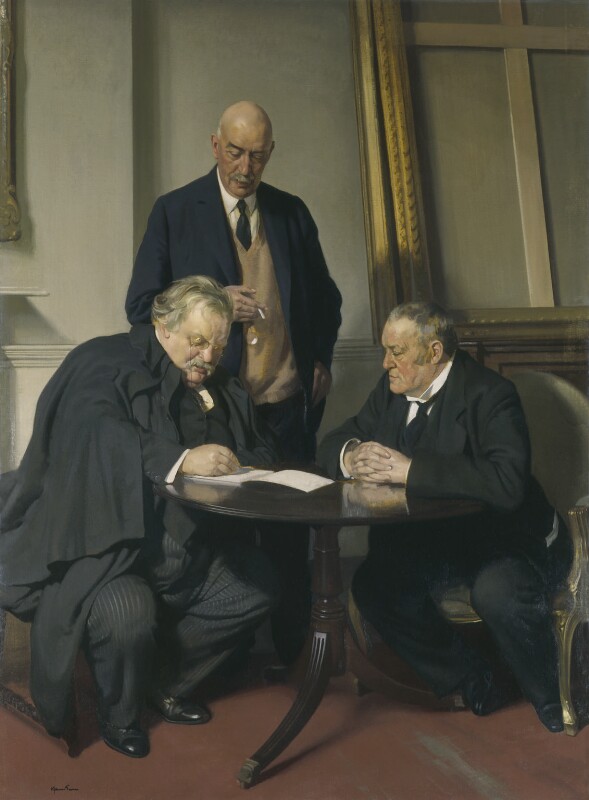Knowing how there are so many out there who hang on my every word, indeed the thousands who for the last week have gone through the kind of withdraw agonies of an addict…I thank you for your patience while I was having a very wonderful retreat-vacation at Quarr Abbey on the Isle of Wight in England.
I am about to return to my everyday life in South Carolina with a renewed vigor for writing, some new ideas and energies.
I’ll write more later about Quarr, but yesterday while I London I took an hour or so to re-visit the National Portrait Gallery. If you don’t know it, it sits right behind the National Gallery just off Trafalgar Square.
I remember it during my days in England as a perfectly good, old fashioned, fusty kind of a gallery with rich wallhangings, a multitude of portraits, sleepy guards in soiled uniforms a tea shop with kindly ladies who called you “love” and toilets that rumbled from the depths..as if complaining that you’d flushed them.
Everything was arranged chronologically so as you wandered through you got a nice old history lesson of England. What was nice about it was that you would spot some famous person like Shakespeare or George IV and then in the same room you’d come across a lesser known person you remembered but had forgotten….if you know what I mean. So you’re trundling along the Edwardian times and say, “Oh look! There’s Beatrix Potter! Do you think she could possible be related to Harry?”
But of course, the whole thing has been given a trendy re-fit. The interior is not vast open spaces with escalators, chrome, glass and little class. Alas.
Furthermore, they have reduced the number of paintings drastically. This is clearly a sort of politically correct editing. Let me give them the benefit of the doubt. They may simply have chosen the famous people they liked or only the ones they knew. Their editing may have been done out of sheer ignorance.
I went along to see that famous triple portrait of Chesterton, Belloc and Baring. It was gone. Also missing were T.S.Eliot, C.S.Lewis, Tolkien, Charles Williams, Edith Sitwell, Alec Guiness, Waugh, Graham Greene, W.H.Auden, Dorothy Sayers and Siegfried Sassoon. Basically anyone who was in Joseph Pearce’s great book Literary Converts was absent from the Hall of Fame.
John Bunyan was there and Milton and John Donne, but other great Christian writers were missing.
Likewise the notable religious figures of England. I spotted Cranmer, Ridley and Latimer but Thomas More and John Fisher were missing. Remarkably, John Henry Newman and Pusey made the cut and I spotted one of the Wesleys. Other than that, the eminent Archbishops of Canterbury were out in the cold as were any other noted Catholic or Christian figures.
Admittedly, my tour was relatively brief, but I suspect these portraits languish in the basement archives where I imagine when the lights have been turned off and everyone has gone home you can hear faint groans of loneliness, frustration and rage that for all their efforts and sacrifices these great men and women of Britain are locked away in their packing cases like that warehouse at the end of Raiders of the Lost Ark







Leave A Comment
You must be logged in to post a comment.